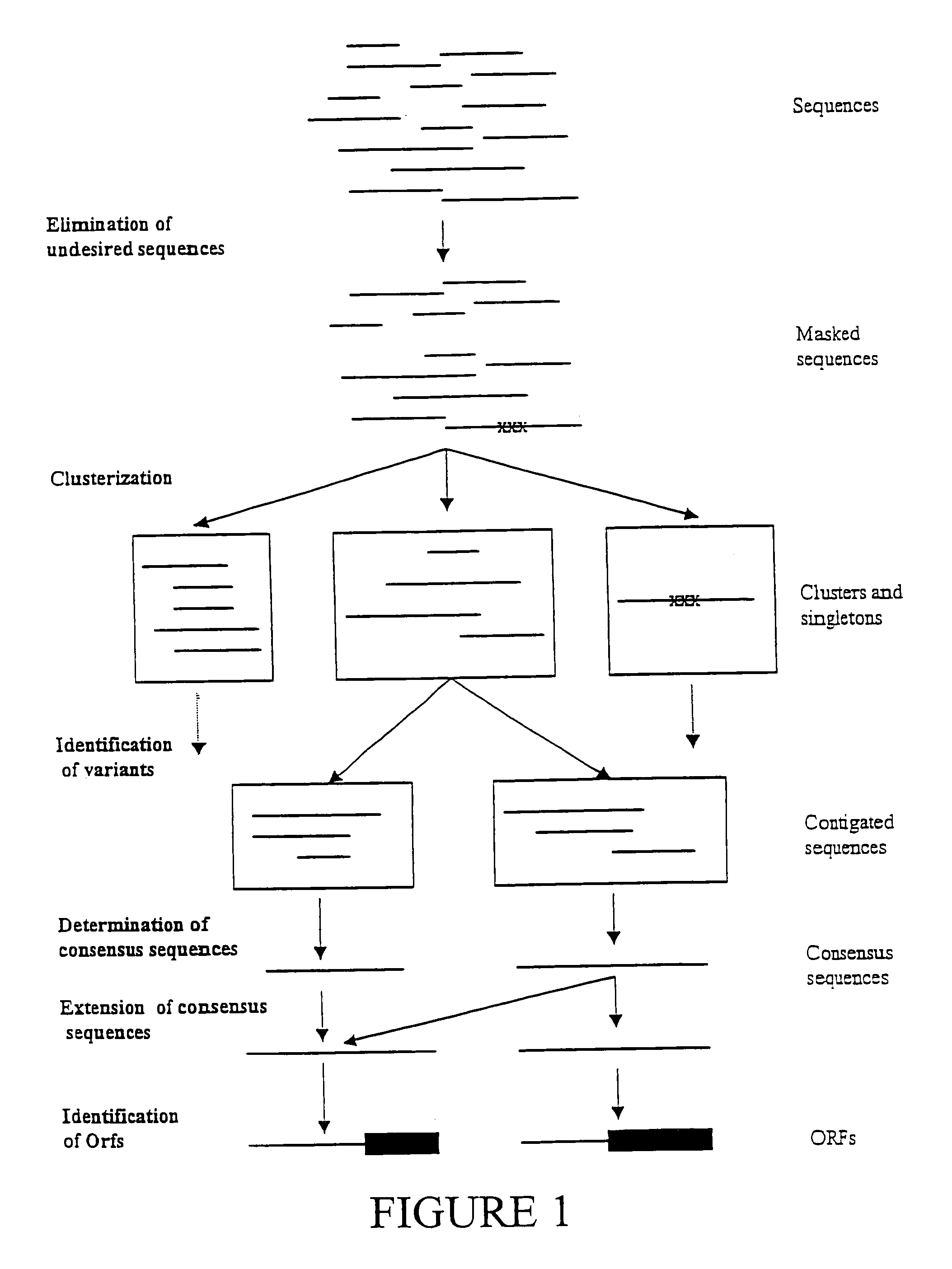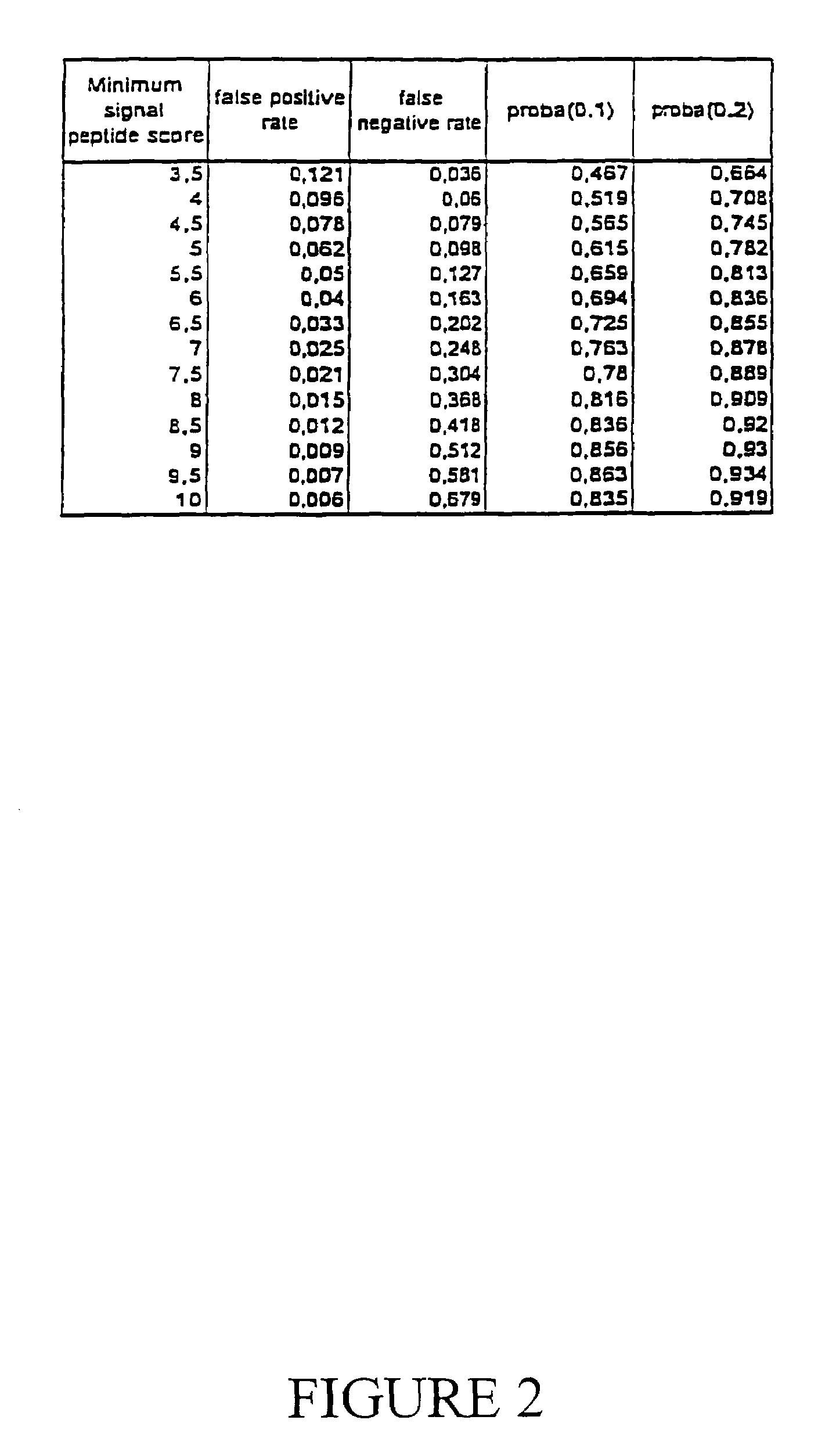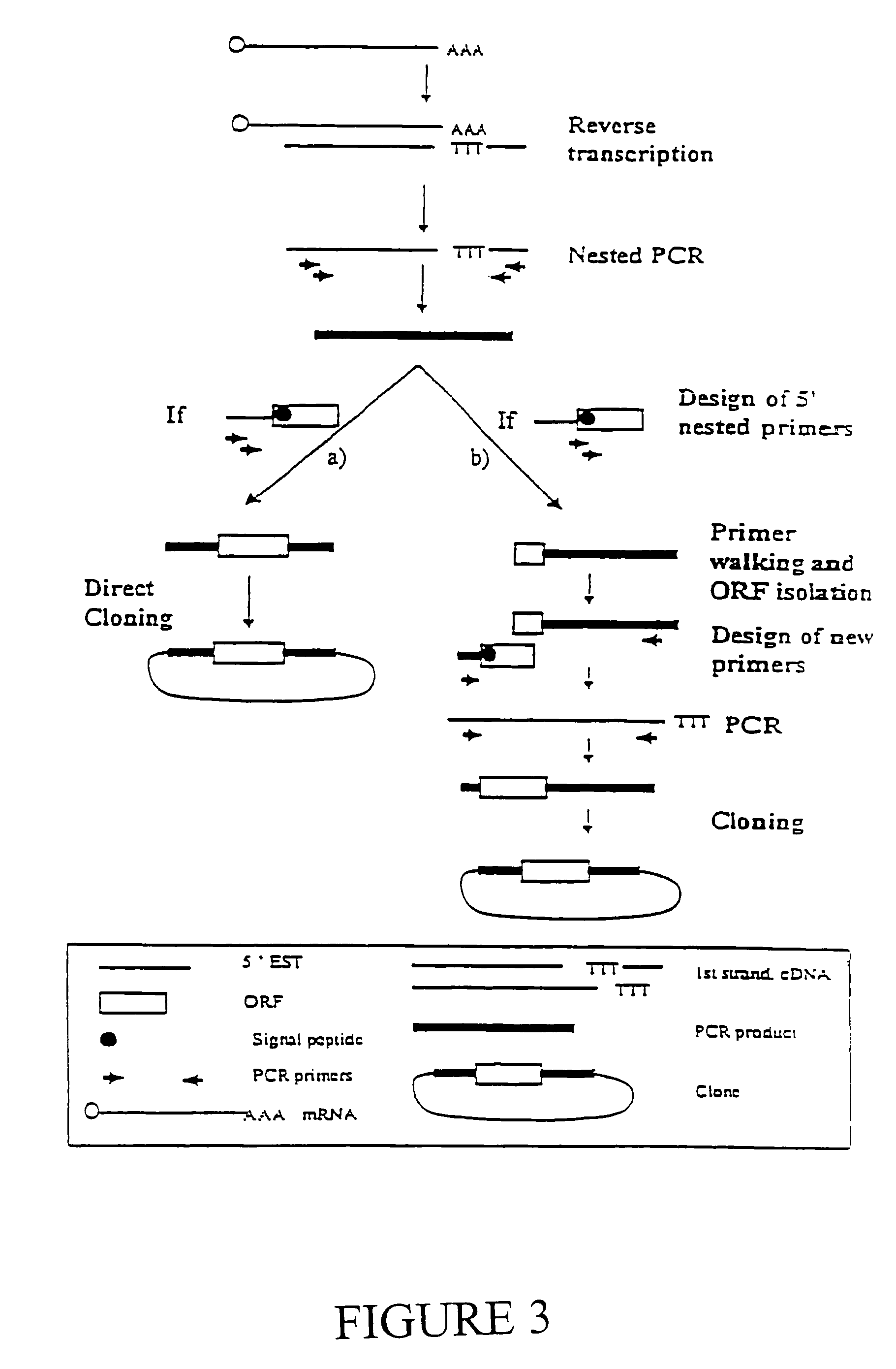Expressed sequence tags and encoded human proteins
a technology of encoded human proteins and sequence tags, which is applied in the field of encoded human proteins and expressed sequence tags, can solve the problems of affecting the purification effect of desired proteins, and requiring years of effort, and achieves the effect of facilitating the purification of desired proteins
- Summary
- Abstract
- Description
- Claims
- Application Information
AI Technical Summary
Benefits of technology
Problems solved by technology
Method used
Image
Examples
example 1
Preparation of mRNA
[0117]Total human RNAs or polyA+ RNAs derived from 30 different tissues were respectively purchased from LABIMO and CLONTECH and used to generate 42 cDNA libraries as described below. The purchased RNA had been isolated from cells or tissues using acid guanidium thiocyanate-phenol-chloroform extraction (Chomczyniski and Sacchi, Analytical Biochemistry 162:156–159, 1987). PolyA+ RNA was isolated from total RNA (LABIMO) by two passes of oligo dT chromatography, as described by Aviv and Leder., Proc. Natl. Acad. Sci. USA 69:1408–1412, 1972) in order to eliminate ribosomal RNA.
[0118]The quality and the integrity of the polyA+ RNAs were checked. Northern blots hybridized with a globin probe were used to confirm that the mRNAs were not degraded. Contamination of the polyA+ mRNAs by ribosomal sequences was checked using Northern blots and a probe derived from the sequence of the 28S rRNA. Preparations of mRNAs with less than 5% of mRNAs were used in library construction....
example 2
cDNA Synthesis Using mRNA Templates Having Intact 5′ Ends
[0120]For the mRNAs joined to oligonucleotide tags, first strand cDNA synthesis was performed using a reverse transcriptase with random nonamers as primers. In order to protect internal EcoRI sites in the cDNA from digestion at later steps in the procedure, methylated dCTP was used for first strand synthesis. After removal of RNA by an alkaline hydrolysis, the first strand of cDNA was precipitated using isopropanol in order to eliminate residual primers.
[0121]The second strand of the cDNA was synthesized with a Klenow fragment using a primer corresponding to the 5′ end of the ligated oligonucleotide. Methylated dCTP was also used for second strand synthesis in order to protect internal EcoRI sites in the cDNA from digestion during the cloning process.
[0122]Following cDNA synthesis, the cDNAs were cloned into pBlueScript as described in Example 3 below.
example 3
Cloning of cDNAs Derived from mRNA with Intact 5′ Ends into Bluescript
[0123]Following second strand synthesis, the ends of the cDNA were blunted with T4 DNA polymerase (Biolabs) and the cDNA was digested with EcoRI. Since methylated dCTP was used during cDNA synthesis, the EcoRI site present in the tag was the only hemi-methylated site, hence the only site susceptible to EcoRI digestion. The cDNA was then size fractionated using exclusion chromatography (AcA, Biosepra) and fractions corresponding to cDNAs of more than 150 bp were pooled and ethanol precipitated. The cDNA was directionally cloned into the SmaI and EcoRI ends of the phagemid pBlueScript vector (Stratagene). The ligation mixture was electroporated into bacteria and propagated under appropriate antibiotic selection.
[0124]Clones containing the oligonucleotide tag attached were then selected as described in Example 4 below.
PUM
 Login to View More
Login to View More Abstract
Description
Claims
Application Information
 Login to View More
Login to View More - R&D
- Intellectual Property
- Life Sciences
- Materials
- Tech Scout
- Unparalleled Data Quality
- Higher Quality Content
- 60% Fewer Hallucinations
Browse by: Latest US Patents, China's latest patents, Technical Efficacy Thesaurus, Application Domain, Technology Topic, Popular Technical Reports.
© 2025 PatSnap. All rights reserved.Legal|Privacy policy|Modern Slavery Act Transparency Statement|Sitemap|About US| Contact US: help@patsnap.com



